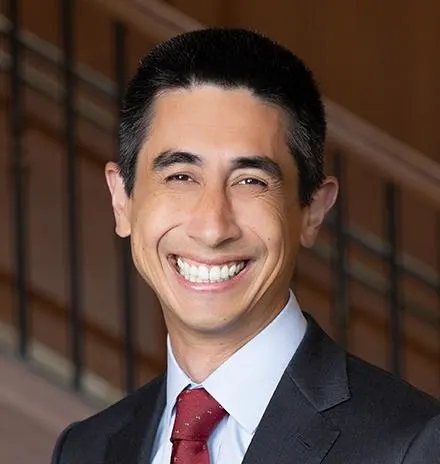Many employers offer retirement savings plans that automatically withdraw contributions from paychecks, a popular feature that applies to some 40 percent of plan participants at US private companies.
Yet the practice of requiring employees to opt-out rather than opt-in to 401k plans and individual retirement accounts (IRAs) in the US and similar products in other countries may not build nest eggs for those employees as much as previously thought, find new studies by Harvard Business School Professor John Beshears.
Are we cutting off people from an important source of liquidity when they face an emergency like job loss?
For instance, automatic enrollment boosts savings rates over time by a modest 0.6 percent of income; when contributions are automatically increased, in a process known as auto-escalation, the savings rate increase is even smaller at 0.3 percent of income. What’s more, automatic enrollment deductions can push up employee unsecured debt loads.
HBS Working Knowledge recently spoke with Beshears, the Albert J. Weatherhead Jr. Professor of Business Administration, about the implications of these findings in an uneven economy. The conversation has been edited lightly for clarity and length.
Rachel Layne: Much of your recent research shows that automatic enrollment still works, but not to the extent previous studies indicated, particularly beyond the first year of enrollment. Can you explain why?
John Beshears: Automatic enrollment still does produce meaningful moves in outcomes for retirement savings. That said, what this latest research is making clear is that we need to be a little bit less optimistic about how big those impacts on retirement savings are.
It's not that earlier research—including my own—somehow made a mistake. It's just that it was not focused on many other factors. A lot of things happen beyond year one of enrollment or even beyond year three of enrollment.
Layne: You mention the use of matching funds and an employee staying at a company long enough to “vest” in their plan to access that boost. Why is that?
Beshears: At a lot of companies, the employer offers these matching dollars. If an employee puts $1 of their own paycheck into a 401k or similar account, the employer is going to put in some money right alongside it—and that's a fantastic deal for the employee. It can be a 25 percent or 50 percent or 100 percent, sometimes even larger, instantaneous rate of return on your investment. That's too good a deal to pass up for just about everyone.
But a lot of companies also have rules whereby if the employee does not stay at the company for a long enough time, some fraction of—and in some cases, all—of those employer matching dollars are not the employee’s to keep when the employee leaves.
Layne: Can you give me an example?
Beshears: Some companies say: “If you stay at the company for three years, then all the employer matching dollars are yours to keep.” But let's say you leave after one year. You, of course, get to keep the money that you contributed yourself as an employee. But you do not get to keep the employer matching dollars.
In the United States, job turnover is quite high. When people separate, what we had previously been calling part of the positive impact of automatic enrollment on retirement savings accumulation is undone completely. That’s because they're not walking away with those employer-matching dollars.
Layne: What are some other consequences of turnover?
Beshears: Think about automatic escalation. What that means is, unless the employee actively chooses a different path for their contributions, a fraction of their paycheck goes into their 401k account as retirement savings. That fraction is going to be on a schedule to ratchet up, say, once a year. Say it goes up by one percentage point of pay each year, up until maybe 10 percent.
If they stay with one employer for their entire working life, then they're going to spend a lot of their working life at a very high contribution, because they start at 3 [percent] and go to 10, then they stay at 10 for the rest of their working life.
Now for the employee who, on a regular basis, leaves their job after one or two years—for them, the escalator doesn't have a chance to fully kick in. Then you have to start at 3 percent again, because you're moving to a new company.
Layne: Automatic enrollment programs tend to have more impact for people with lower incomes. Why is that?
Beshears: Consider what people with low incomes would choose for themselves.
For example, take automatic contributions that move from zero to 3 percent. If low-income people in general would choose on their own a 2 percent contribution rate, whereas high-income people might choose a roughly 10 percent contribution rate, you can see why, whether the default contribution rate is zero or three, high-income people are going go to 10 percent no matter what.
They're participating either way, whereas people with lower incomes maybe would have chosen a 2 percent contribution rate … when they look at 3 percent they say, “oh, that's close enough, I'm just going to stick with it.” Their participation decision and their outcome are very much influenced by whether the default is zero or 3 percent.
Layne: Your research on how automatic enrollment can lead to more unsecured debt for employees looks at the UK because of policy changes requiring automatic enrollment. What’s the pattern there?
Beshears: What we see is that there is indeed additional debt that households accumulate from having been exposed to automatic enrollment for longer.
Over the course of three, three-and-a-half years, [we looked at] each additional month an employee is exposed to automatic enrollment. Call it [about $46] in the UK in incremental savings in the pension. But along with that, we see an incremental [$9.20] in debt. And the particular debt is not in the form of credit cards, but personal loans and bank overdrafts.
So what we're seeing is a little bit more than 20 percent of the savings increase generated by automatic enrollment is matched by—or offset by—an increase in these forms of unsecured debt.
Beyond that, we see a small but detectable increase in a household[’s] likelihood of having a mortgage at all. Now that one we did not expect, but also note that that one is a little bit hard to interpret in terms of its impact on net wealth. You're getting a big asset in the household balance sheet, in addition to a big debt, and the net wealth impact of that is pretty complicated to figure out.
Now, the further twist to this is that we find evidence that automatic enrollment provides—it's small but detectable—improvement in your credit score and a decrease in your likelihood of defaulting on loans.
Layne: So if I'm a policymaker, what am I to take from these findings?
Beshears: One of the major forces pushing against retirement balance accumulation is early withdrawals, pre-retirement withdrawals. Policymakers could consider making retirement balances less accessible before you reach retirement age.
Now you want to be clear-eyed about thinking through all the consequences. If the retirement balances are not something an employee can withdraw before retirement, or are harder to withdraw, does that make people less inclined to contribute in the first place?
Another thing to think about: Are we cutting off people from an important source of liquidity when they face an emergency like job loss? Might we also use automatic enrollment to encourage people to save in an emergency savings account, which is liquid?
You can imagine simultaneously reducing early access to retirement balances while helping people build up emergency savings balances so that they have a little bit of money on hand if, say in the US, an unexpected medical bill hits, or if they face job loss.
Another idea: instead of having the contribution escalator start at the bottom each time someone switches jobs, retirement plan providers in the US could coordinate so that employees can continue where they left off.
Image by HBSWK with asset generated in Midjourney, an artificial intelligence tool.


